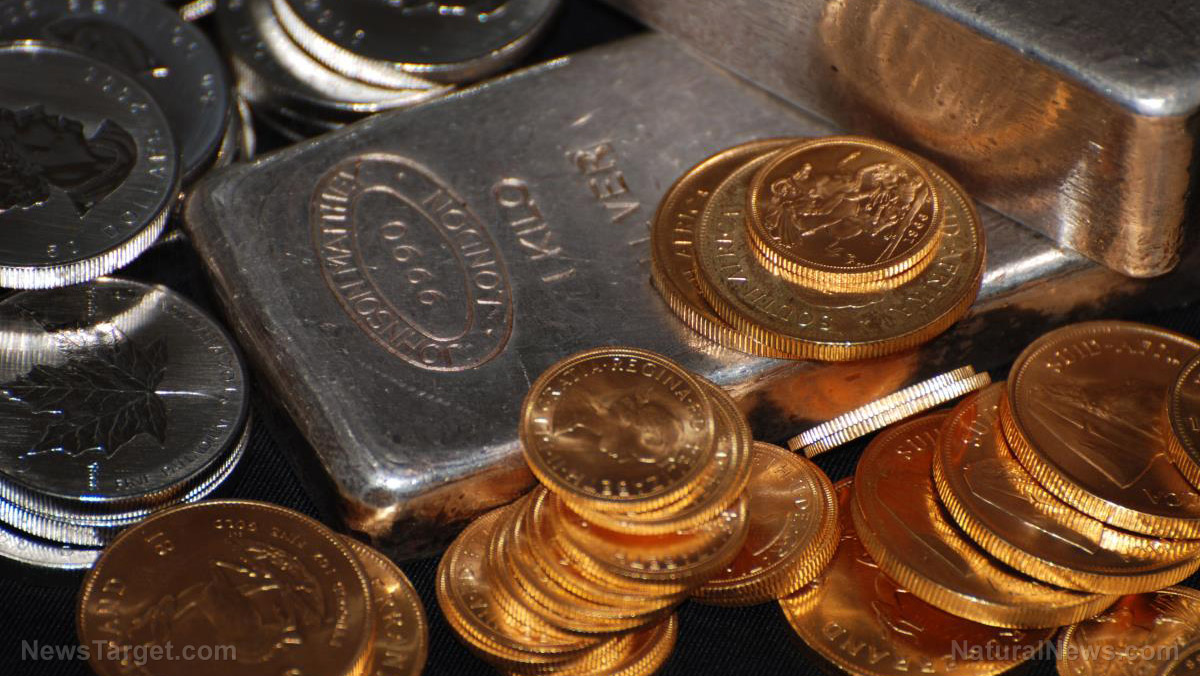Why Gold $3000 Is Next: Bank Of America’s Full ‘Must Read’ Client Call Transcript
from ZeroHedge:
 With gold soaring above $2000 (for the December future) to a new all time high…
With gold soaring above $2000 (for the December future) to a new all time high…
… now is an opportune time to revisit a conference call held by Bank of America’s commodities team (which as a reminder is the most bullish on gold, expecting the yellow metal to hit $3,000 in 18 months) in which the bank discussed its outlook for gold and other precious metals in the context of global asset allocation (Michael Hartnett), interest rates (Mark Cabana), and technicals (Paul Ciana).
Key themes:
The global pandemic is providing a sustained boost to gold due to increased savings, growing inequality, vast capital destruction, declining productivity, rising public debt levels, and, most importantly, falling equilibrium real interest rates. In addition, we believe that a clouded geopolitical chessboard further supports the case for our $3,000/oz forecast over the next 18 months. How does gold fit into the broader macro picture?
With governments around the world boosting their damaged economies with a host of fiscal packages focused on the environment, we also see upside in other precious metals, including silver, platinum and palladium. How high could these metals go?
Some quotable highlights:
“The monetary and the fiscal stimulus in terms of the announcements thus far, it comes to $20 trillion, $8 trillion of monetary stimulus and $12 trillion of fiscal stimulus. And that number is – it’s a little over 20% of global GDP. So it’s just astonishing and breathtaking and you have to sort of pinch yourself sometimes to sort of realize that it’s actually happening.”
– Michael Hartnett, Chief Investment Strategist
“[The Fed] is not going to talk about upside risk to inflation in the next six months. I’m not even sure that they would be talking about that in a meaningful way in the next six years”
– Mark Cabana, Head of US Rates Strategy
“When you’re looking at what [DXY, 10 year real rates] levels we would need to see gold at $2500 per ounce, it is combinations like the DXY at 90 and real rates at minus 2. That will take gold to $2500. The DXY at 85 and real rates at minus 1.75 will also take you to $2500. DXY at 80 and real rates at minus 1.5 also take it to $2500 an ounce.”
– Michael Widmer, Metals Strategist
“There’s a saying in technical: buy smiles and sell frowns. So if you look at a chart and is smiling at you, smile back and be long. Gold is likely going higher”
– Paul Ciana, Chief FICC Technical Strategist
* * *
Where to next for gold? – Below is the full must read transcript of BofA’s call “Where to next for gold?” on 30 July 2020, 9am EST
Francisco Blanch: Thanks everyone for joining us. We have a great call for you today. Obviously gold hit record levels in nominal terms in the past few days and we wanted to have a conference call to discuss this with you and bring in our Chief Investment Strategist, Michael Hartnett to talk about his perspective on a cross asset basis on the gold market. And also we wanted to have Mark Cabana, who’s our US Rates Research Head, talk about how interest rates may behave and how central banks may shift, with the Fed’s balance sheet continuing to expand.
And then we want to talk about also some of the technical targets. So we’ve invited Paul Ciana, our Chief FICC Technical Analyst as well as Michael Widmer our Metals Research Head and myself Francisco Blanch. I run the Commodities and Derivatives Research Team for the bank.
So let me kick off with our view on gold and then I’m going to start with Michael Hartnett and go down the list of our analysts asking them specific questions around the outlook for gold. But importantly I want to lay out the main view. The main view, as many of you know, is we’ve called for $3000 gold as a target in the next 18 months and we put a piece out entitled “The Fed can’t print gold” back in April.
The reason why we put that piece out is because we felt the COVID crisis was leading to such a large increase in central bank balance sheets, such a large expansion of monetary policy, coupled with an enormous fiscal expansion that the value of currencies, not just the dollar, would be hit pretty meaningfully. And so far it seems to be the case that investors have geared their portfolios partially believing the unprecedented fiscal and monetary expansion would lead to a large surge in investor gold buying, with ETF inflows at record levels in recent weeks.
This is an investor led rally so far but we think that we still have a lot of room to grow. Investor demand has gone from about 25% of gold demand to about 45% in the second quarter. So investor demand as a share of gold has almost doubled. But throughout this period we’ve also seen that central banks have reserved their cash for liquidity reasons and have curtailed their [gold] purchases. And we’ve also seen a drop in jewelry demand, very meaningful drop, partially because stores were closed but also because of mobility restrictions.
And then additionally we’ve seen an important shift in the purchases of coins and bars for a number of reasons. So gold has seen a big shift on the demand side but to a large extent the rally has been ETF driven, mostly driven by investor buying. And we see that continue over the course of the next six to 12 months with eventually central banks coming in, with potentially more investors coming in, and with allocations increasing.
Now, why would this happen? Well, mainly we think the pandemic is boosting gold demand from investors because of a large surge in savings, because of the growing inequality, because of the vast capital destruction cycle that we’re seeing, because of declining productivity, because of rising public debt levels and, the most important of all, because equilibrium real interest rates are falling. And that, in itself, is a very, very important reason why we’re seeing gold prices rallying. And then, of course, the US dollar falling partly because the US is the most affected country by COVID-19 so far across G10.
Now there is another factor that we think is helping the rallying in gold and could actually boost it over the course of the next few months. It is the fact that China’s GDP has been quickly converging to US levels. This is a very important factor because again it brings questions about the US dollar as a reserve currency. And ultimately I think the fact that China could become the largest economy in the world may create a tectonic geopolitical shift. As we’ve seen, [rising tensions] have led to changes in foreign policy behavior, with the US shutting down a Chinese consulate in Houston and then China responding by doing a similar measure in their own territory.
So I think this situation is likely to lead to more gold demand down the road. Now I don’t think the US will lose its currency reserve status anytime soon. But I think it’s important to understand that the fact that China is rising geopolitically as well as economically at a faster rate today because the US is taking a bigger hit from COVID than China. The pandemic could continue to accelerate this transition.
So with that introduction and that constructive view on gold let me turn over to Michael Hartnett to discuss his views in the context of asset allocation. So good morning Michael and I really appreciate you joining us.
Michael Hartnett: Good morning.
Francisco Blanch: Our commodity team is bullish gold. You’ve been bullish gold also for some time. But before we get to that let’s start with the big macro picture here. What are the major side effects, Michael, on various asset classes of the ongoing massive monetary and fiscal easing? And I know you’ve been at the leading front of this. The theme of liquidity supernova that you put back in the day in the financial crisis has come back again, right? So how do you think about this and what’s happening? Thank you.
Michael Hartnett: Well, you cover an interesting subject here with gold because it has finally joined credits and treasuries and equities in enjoying the liquidity supernova. In addition gold also may be telling you something about the fiscal stimulus that we’re seeing this year. But if you put the two together in 2020, the monetary and the fiscal stimulus in terms of the announcements thus far, I mean it comes to $20 trillion, $8 trillion of monetary stimulus and $12 trillion of fiscal stimulus. And that number is – it’s a little over 20% of global GDP.
So it’s just astonishing and breathtaking and, you know, you have to sort of pinch yourself sometimes to sort of realize that it’s actually happening. But the other thing you can do is just look at your screen and see what it’s doing to asset prices. And, you know, I think since the March lows and obviously the March lows followed a, you know, one of the great crashes of all time but since those lows you’ve seen the global equity market capitalization go up by almost $30 trillion. Global stock markets are up more than 40%. Oil as you well know is up 70%, 80%.


